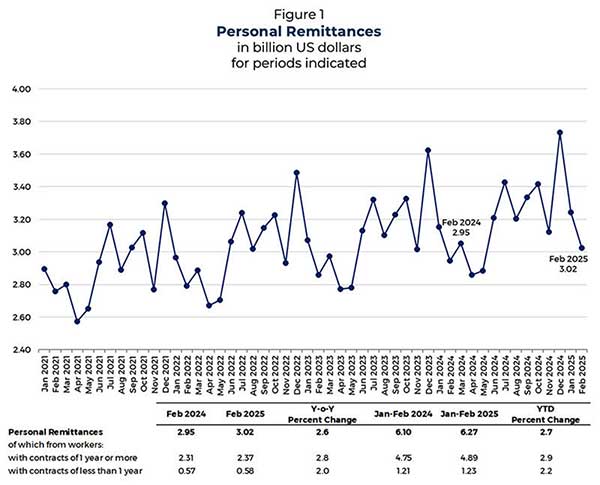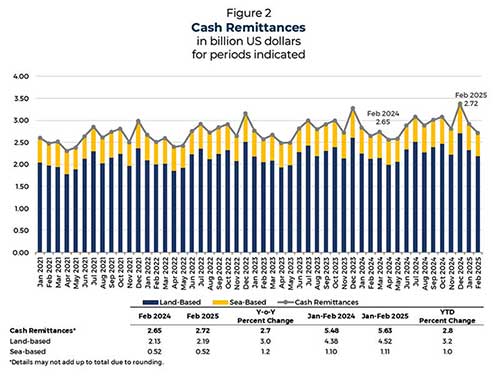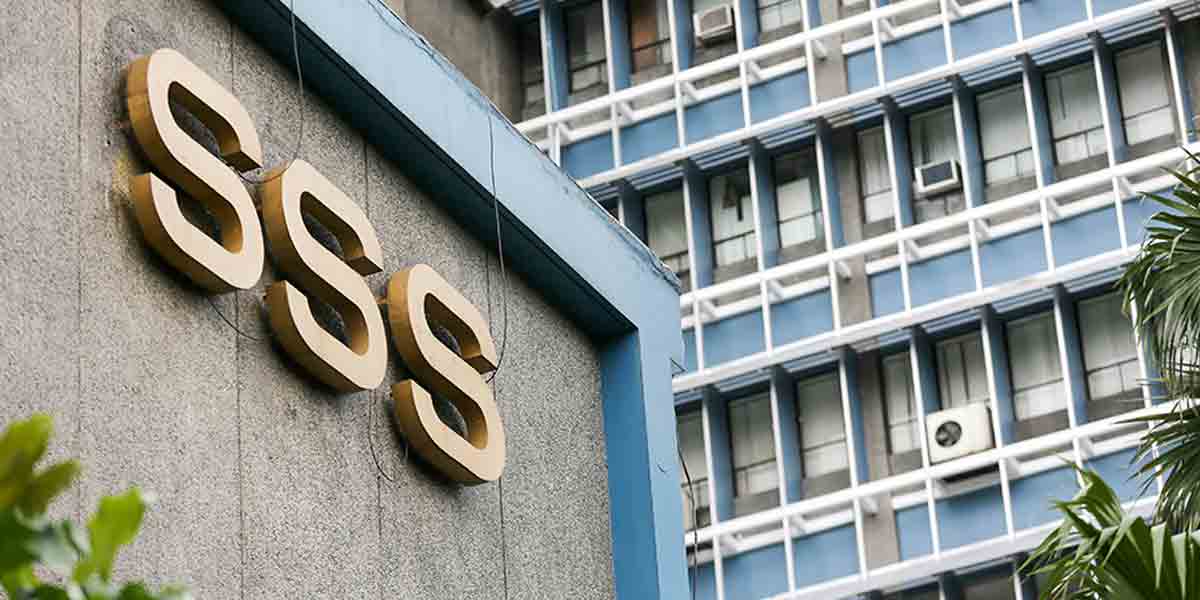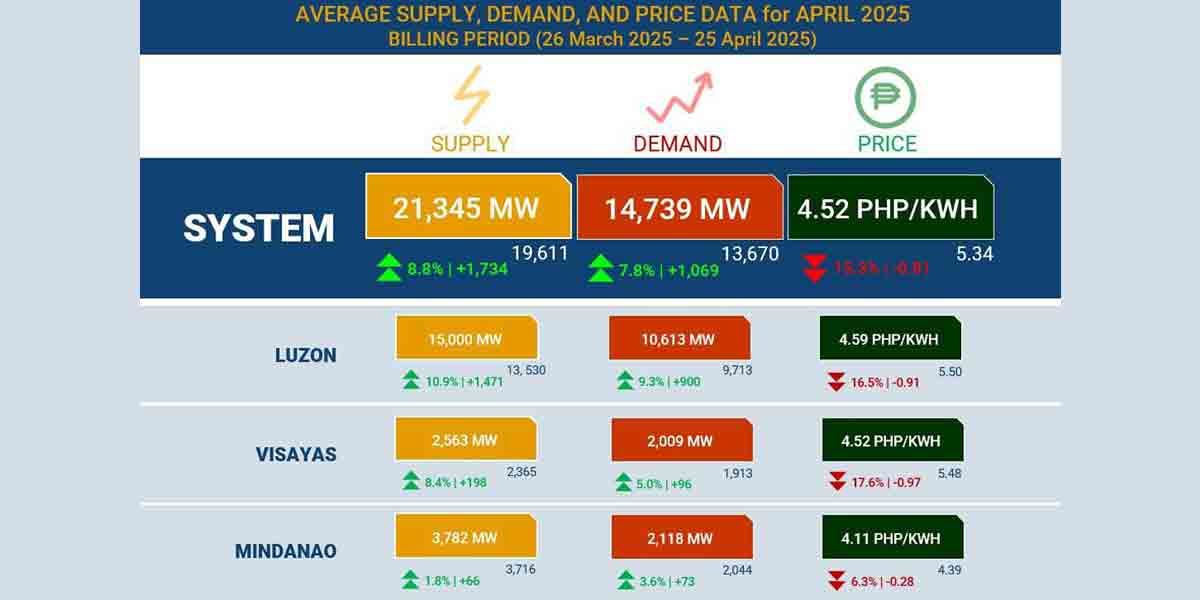The figure marked an increase from the $2.95 billion recorded in February 2024, driven by steady inflows from both land-based and sea-based workers abroad.

Cumulative remittances for the first two months of 2025 reached $6.27 billion, up 2.7 percent compared with $6.10 billion during the same period last year.
Cash remittances coursed through banks accounted for $2.72 billion in February 2025, also reflecting a 2.7 percent increase from $2.65 billion in February 2024.
For the January to February period, cash remittances rose 2.8 percent year-on-year to $5.63 billion from $5.48 billion.

The BSP attributed the growth to increased remittances from key countries, including the United States, Saudi Arabia, Singapore, and the United Arab Emirates.
“The consistent rise in personal and cash remittances supports household consumption and plays a crucial role in sustaining the Philippine economy,” the BSP said in a statement.
Data showed the United States remained the leading source of remittances during the period, followed by Singapore and Saudi Arabia.
However, the BSP noted limitations in country-source data due to remittance routing practices by foreign remittance centers.
“Remittances coursed through correspondent banks, many of which are located in the U.S., may overstate the actual contribution of the U.S. as a source,” the BSP clarified.
Despite these limitations, OF remittances remain a vital economic pillar, accounting for nearly 9 percent of the Philippines’ gross domestic product (GDP), based on previous BSP estimates.
According to the Philippine Statistics Authority, around 1.96 million Filipinos were working overseas as of 2023, with the majority employed in service-oriented and domestic work sectors.




















